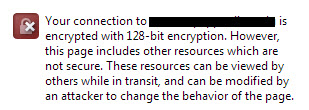
Following are three questions to ask yourself, along with the steps to execute these factors–whether it will be you taking care of it, or someone else within your organization.
1. Is Your Website Hosting Fast and Reliable?
The first thing to examine is your website hosting. Is your website free from downtime? (Nothing is 100% but it should be very close). If you are on a shared hosting platform your website might go down more often than you think. Read about the difference between shared hosting and business class hosting. Did you know that search engines like Google consider website speed a ranking factor? Find out if your website hosting is adequately fast. If it’s not, this is a factor that will hold you back in search ranking.
But let’s think beyond Google; people care about webpages that load fast. They have a better experience and won’t get frustrated. Google wants to send people to those type of websites, therefore they want people’s eyes on great results it produces in a search. This isn’t because Google is a benevolent robot basking in the glow of satisfied searchers; it needs to be successful and profitable first and foremost. When Google returns productive results, this in turn helps their Pay Per Click model work well, and thus the cycle goes round. Google’s success helps them maintain their dominance in the search engine market.
In short, webpage uptime and loading speed matter. Do research about your current hosting partner and how they compare to others as well. The value of a solid hosting partner cannot be emphasized enough.
Other factors to consider in regard to website speed are:
- Is your website configured correctly? A reliable webmaster will have built your site correctly, without extraneous code or features that would slow it down.
- Does your website have a lot of unnecessary plugins? A website overloaded with plugins will be slower. Review your list of plugins to see how many are really necessary.
- Does your website have a lot of style sheets, JavaScript files, etc.? Similar to above, if your site design and theme is complicated and not well-built, it will slow things down.
- Is your website mobile friendly? Remember: mobile devices are small, touchscreen computers that download webpages more slowly than desktop computers. If giant images take a long time to download, or menus are impossible to use on a small screen, users will go elsewhere. Like page load time, Google considers mobile-friendliness a ranking factor.
2. Is Your Website Secured with HTTPS?
Having your site secured with HTTPS is one of the simplest things you can do to help your search ranking! Why? Google prefers to deliver secure content because people prefer secure content. How do you know if your website is currently secured? Simply visit your website and look at the address bar in any browser to see if the padlock icon and the HTTPS appear with the URL:
If your site is not secured, don’t worry, it’s pretty simple to implement. But first let’s discuss what HTTPS is, and how it affects your website traffic.
HTTPS stands for HyperText Transfer Protocol Secure. It determines if the communication between the browser and the web server is encrypted. HTTPS is important in protecting both your website and your visitors from attack.
Google is a big proponent of increasing security on the web. Therefore, all other things being equal, Google serves up sites that are secure in search results before non-secure sites.
How to Implement HTTPS on your Website
Securing your website is an easy thing to do and will help boost your website over others in search results. Whomever manages your web hosting can likely do this for you. You used to have to pay for this, but with most modern systems it’s now free and included with hosting. Let your hosting partner know you would like to use a free solution like Let’s Encrypt.
After your site has been encrypted you are not quite done yet. You need to ensure there are no mixed content errors left on your website. In other words, there may be one or more external elements on your website that are still not secure, and will prevent the entire site from showing as HTTPS.
Mixed Content Errors
Mixed content occurs when a web page is loaded over a secure HTTPS connection, but other resources are loaded over a non-secure HTTP connection. Examples of other resources are fonts, images, videos, stylesheets, or scripts. Modern browsers display warnings about this type of content to indicate to the user that this page contains non-secure resources. Having mixed content degrades the security and user experience of your HTTPS site. Think of non-secure pages as unlocked doors on your otherwise secure home that has a security system.
Here’s what your browser will show if you visit a site with mixed content errors:
If you are on WordPress, an easy way to identify and fix most mixed content errors is to install the plugin Really Simple SSL.
Or, you can ask your webmaster or hosting provider to find pieces of code in your website from third-party sites that could be causing it to be non-secure. Examples of this might be use of third-party landing page elements such as call to action buttons, sign up forms, or even fonts or videos on your site. These elements can be changed over to HTTPS easily.
The last step once your site is secured is to put a redirect in place to always take all the traffic from HTTP to HTTPS. Your webmaster will know how to do this simple task. Now, sit back and enjoy the peace of mind of the padlock!
3. Avoid Duplicate Title Tags
Our last tip for boosting your traffic is probably the easiest one to put into action. Title tags are displayed in the browser tab of the webpage you are visiting.
This is yet another way that search engines gain information from your website. But if every page has the same title tag, for example, the name of your company, it’s not helping show what your website is all about. Instead, it just comes across as vague and repetitive. WordPress and Drupal make this easy and populate the title tag with the same text as the page title itself. If your page is named ‘Services’, it will also put ‘Services’ in the Title Tag, visible in the browser tab. But ideally you will want to customize these a little more for search. Look at your page editor to see if you can edit the title tag field. Sometimes you need a plugin to make it possible to edit the title tag. We suggest the WordPress plugin: The SEO Framework. It’s simple, lightweight, and doesn’t have extra features that you don’t need. Drupal users should try the Metatag module.
Taking the time to look at each of your webpage title tags and customizing them is a simple way to make your website richer in feedback for search engines. If you hire a SEO consultant, they will run a tool that automatically shows how many pages have duplicate title tags.
Tackling the three ideas in this post will get your website on track to a beautiful friendship with the search engines that crawl it, resulting in a win-win. The search engine finds your website to be fast, secure, and informative, and it ranks it higher than sites that are not. The best part is, you start to receive more organic traffic and can feel good about the improvements to your website.
Looking for more of a deep dive into increasing your website traffic?
Receive a free SEO audit ($100 value)

